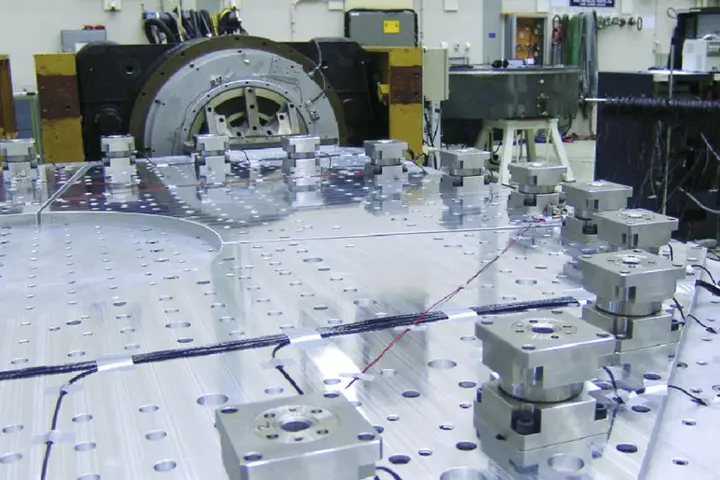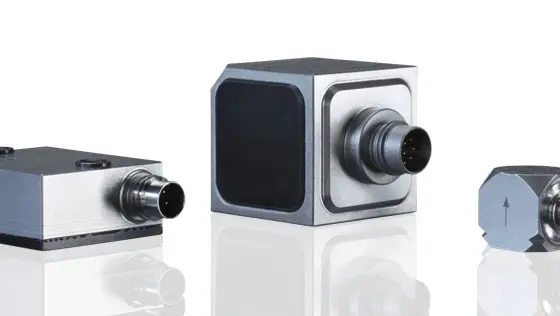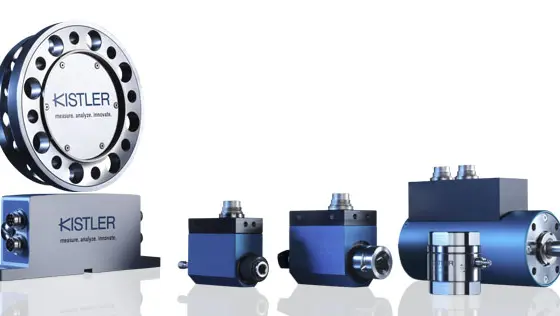How does force limited vibration testing function?
In actual flight, the acceleration in the resonance ranges of the payload is negligible because the mechanical impedance of support structure and payload is similar.
When testing on the ground using a slip table, however, the reaction forces that arise between test object and table are much higher. This is the case because the slip table has a much higher mechanical impedance than the payload. Controlling the frequency excitation by means of accelerometers is therefore insufficient.
To prevent excessive testing, additional force dynamometers from Kistler are used. The dynamometers consist of multiple 3-component force sensors and are arranged as a ring between the payload to be tested and the slip table. The reaction forces between payload and slip table can thereby be measured and limited.
What requirements do force sensors for FLVT need to satisfy?
The following special properties and measurement technology prerequisites are of particular relevance for force limited vibration testing:
- Low outgassing: due to the vacuum environment, entrapped gas is released which affects devices such as cameras. FLVT sensors must therefore be hermetically sealed and equipped with low-outgassing cables.
- Optimum installation: depending on space needs and requirements, either preloaded force sensors or load cells that are calibrated on-site are recommended.
- Low crosstalk: because the resulting forces and torques are each calcualted from three signals, high accuracy is necessary during the measurement.
- Simple summing: modern charge amplifiers enable the simple summing of signals prior to conditioning. This enables optimization of the required data channels without complex voltage summing methods.
- Low height tolerance: even low height differences between the sensors can result in enormous tensions between two flat plates during mounting, subjecting the sensors to unnecessary preloading. They are therefore ground together to the same height ex works.






![진동 테스트 [object Object]](https://kistler.cdn.celum.cloud/SAPCommerce_CMSTeaser_560x375/vibration-testing-16599.webp)